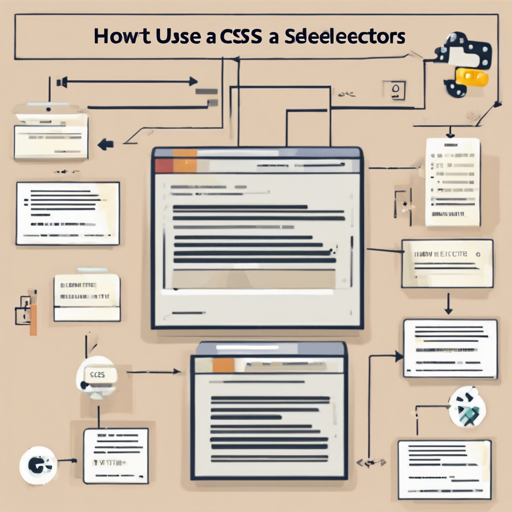Welcome to the world of CSS selectors in Python using the cssselect library! This powerful tool allows you to parse CSS3 selectors and translate them into XPath 1.0 expressions. These expressions can then be utilized in XML or HTML documents to locate matching elements. In this article, you’ll learn how to get started with cssselect, including installation and troubleshooting tips.
Getting Started with cssselect
Before diving into the usage, let’s ensure you’ve got everything set up for success. Here are the steps you’ll need to follow:
1. Installation
To install the cssselect library, you can easily use pip. Here’s the command you need to run:
pip install cssselect2. Basic Usage
Once you have installed cssselect, you can use it in your Python scripts. Here’s a simple analogy to help you understand its functionality:
- Imagine you are at a huge library (your HTML or XML document).
- Every book (element) has a unique title (selector) and you want to find a specific book without checking every single one.
- Using cssselect is like having an efficient librarian (the library function) who can instantly show you the correct aisle and shelf where the book is located based on your description (CSS selector).
3. Example Code
Here’s how you can use cssselect in practice:
from lxml import etree
from cssselect import GenericTranslator, SelectorError
html = "Hello World!"
tree = etree.HTML(html)
css_selector = ".example"
try:
xpath_expr = GenericTranslator().css_to_xpath(css_selector)
result = tree.xpath(xpath_expr)
print([etree.tostring(e).decode() for e in result]) # Outputs: ['Hello World!']
except SelectorError as e:
print(f"Error: {e}")
Troubleshooting
Sometimes things may not go as smoothly as you expected. Here are a few troubleshooting tips:
- Error message: If you encounter a SelectorError, double-check your CSS selector syntax. Ensure it conforms to CSS3 standards.
- Dependencies issues: If you face issues installing cssselect, make sure your Python and pip installations are up to date.
- Performance concerns: Large HTML documents can slow down XPath queries. Try optimizing your selectors to be more specific.
For more insights, updates, or to collaborate on AI development projects, stay connected with fxis.ai.
Where to Find More Information
For comprehensive documentation, examples, and advanced usage, check out the online documentation at cssselect documentation.
Conclusion
With cssselect, parsing and querying HTML/XML documents using CSS selectors is efficient and straightforward. Whether you’re scraping web data or working with XML, this tool simplifies your tasks significantly.
At fxis.ai, we believe that such advancements are crucial for the future of AI, as they enable more comprehensive and effective solutions. Our team is continually exploring new methodologies to push the envelope in artificial intelligence, ensuring that our clients benefit from the latest technological innovations.
Quick Links
- Source, issues, and pull requests on GitHub: GitHub Repository
- Releases on PyPI: PyPI cssselect
- Learn more about CSS3 Selectors
- Explore XPath 1.0
- Discover lxml

